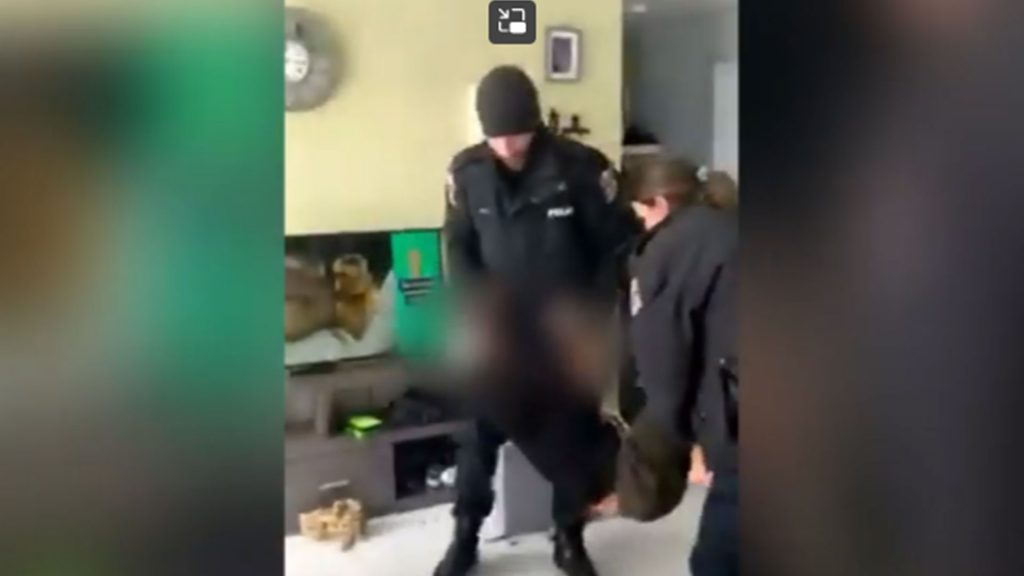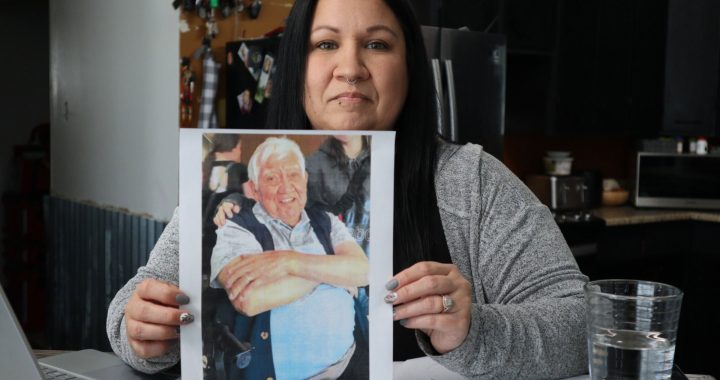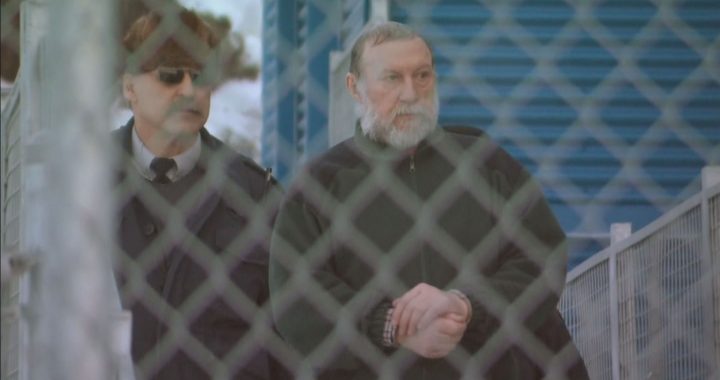
In a video circulating widely this week, an Inuk child screams as police forcibly haul him, barefoot, away from a visit with his mother in Nunavik in the northern region of Quebec.
The video, posted to Facebook by the seven-year-old’s mom, has racked up thousands of shares and has people demanding better treatment by youth protection — especially in the north, where a much higher proportion of children are under this sort of care.
Dozens of residents of Nunavik, Quebec, where the video was taken, called it an overreaction, with some saying it especially doesn’t sit well given the history of the region.
“DYP… is the new residential school,” a woman commented.
“This makes me boil inside,” another person wrote. “No matter what the situation is, this is abuse.”
Quebec’s youth protection system, which has a branch overseen by Nunavik social services, said it’s “extremely rare” to involve the police in such cases, but happens when all alternatives have been exhausted.
The mother who posted the video, whom CTV is not naming to avoid identifying her son, said in an interview that it all happened very fast.
The boy was simply crying because he didn’t want to end the visit after living with her until just two months ago, she said.
“I didn’t want to be arrested so I just recorded and stayed calm,” said the 30-year-old.
“It broke me into pieces.”
In the video, as the boy screams and a youth protection officer stands nearby, two police officers pick him up by his arms and ankles and carry him, hammock-style, out the door and down the steps.
The mother films from a window as they put him in the back seat of a truck, with the boy still wailing. He isn’t wearing socks, shoes or a jacket as they carry him outside.
Even if there wasn’t time to allow him to calm down, there was no need to lug him out that way, she said.
“I mean, that big officer, the guy cop, he could have just taken him and put him on his shoulder,” she said.
“Instead they went… like he’s a criminal or something. He’s only seven. He doesn’t deserve that.”
But she says a more reasonable response would have been just to let him adjust to the idea of leaving. She’s also fighting to get custody back permanently, after losing it only briefly, she said.
The two were visiting each other at the woman’s cousin’s house, which is in a small town in Nunavik where the boy has been living, but not their hometown.
In late February, the boy was sent to live with his grandfather as the mother, who is on probation, missed some calls and check-ins, she told CTV.
On March 13, she was sent to jail for about a month over the probation issue, ultimately going to a facility in Laval, near Montreal, she said.
In the meantime, Quebec’s Department of Youth Protection (DYP) system put the boy in foster care, where he’s still living.
It’s been a devastating few months for the whole family, she said, and impossible even to speak by phone.
“He probably misses talking to me, too, and I miss so much talking to him,” she said.
The woman put CTV in touch with her two lawyers, who are working on the child custody situation, but they couldn’t immediately comment to confirm the details of her case.
She said she has no idea how long it might take to regain custody. She added that a bureaucratic mixup created or exacerbated the problem around the visit — she “clearly” told the local DYP worker that she was planning a visit with the child, but a second DYP agent told her she never heard about it, and “that’s when they started taking him,” she said.
When asked for comment, the DYP forwarded the request to Nunavik’s social services agency, which said involving police is uncommon, but it isn’t done lightly.
“What is witnessed in the video is not standard procedure. However, in some rare instances when all else has been attempted to no avail, the support of police officers may be requested,” the agency wrote.
“It should be noted that before reaching such a point, a wide range of methods and steps are taken; police involvement is definitely not the first.”
Whether or not to involve police is also “considered with supervisors,” they said.
“Decisions to go that route are extremely rare, are not taken lightly and do not represent standard practice.”
The chief of Nunavik’s police force couldn’t be reached for comment Wednesday.
The woman disputed how many steps were taken before they involved police, who arrived either with the social worker or immediately afterward, she said.
“They just came like that without warning me,” she said.
The DYP agent “tried to put on his jacket [and] my son didn’t want to, because he didn’t want to leave me, so the cops forced him and my son was fighting back,” she said.
A major 2019 report on Quebec social services and Indigenous people found there’s an “absence of statistical data” on how many children are in non-family care in Nunavik, but that rates are much higher than among non-Indigenous children.
In a single year, in a territory with just over 13,000 inhabitants at the time, 2,137 child welfare reports were received in 2016, and 374 Inuit children were placed in alternate care.
Testifying for the report, the DYP director in Nunavik said that one in three Inuit children were in contact with youth protection at some point in the preceding year, according to APTN.
Each intervention worker had an average of 45 files at the time, said the agency’s co-director at the time, APTN News reported.
“The provincial average is 18 files per intervention worker so obviously there are issues that affect the quality of services,” she said.
The mother who filmed this week’s video said that despite her anger, she was still surprised to see the reaction it’s gotten — but it’s been helping her through the difficult week, she said.
“A lot of people have been comforting me through messages… saying they’re hurt also,” she said.
The report first appeared on CTV online by reporter Selena Ross.










